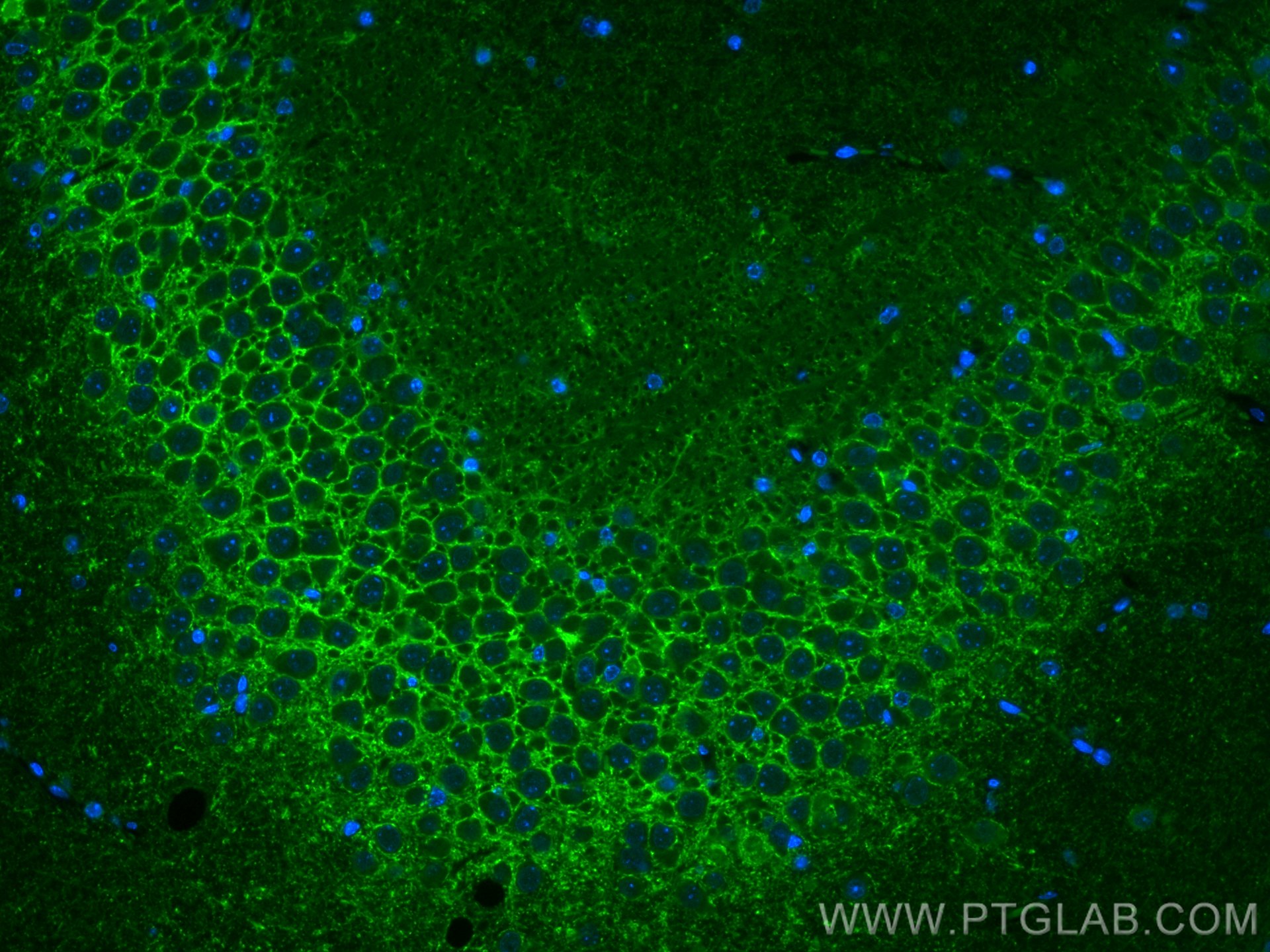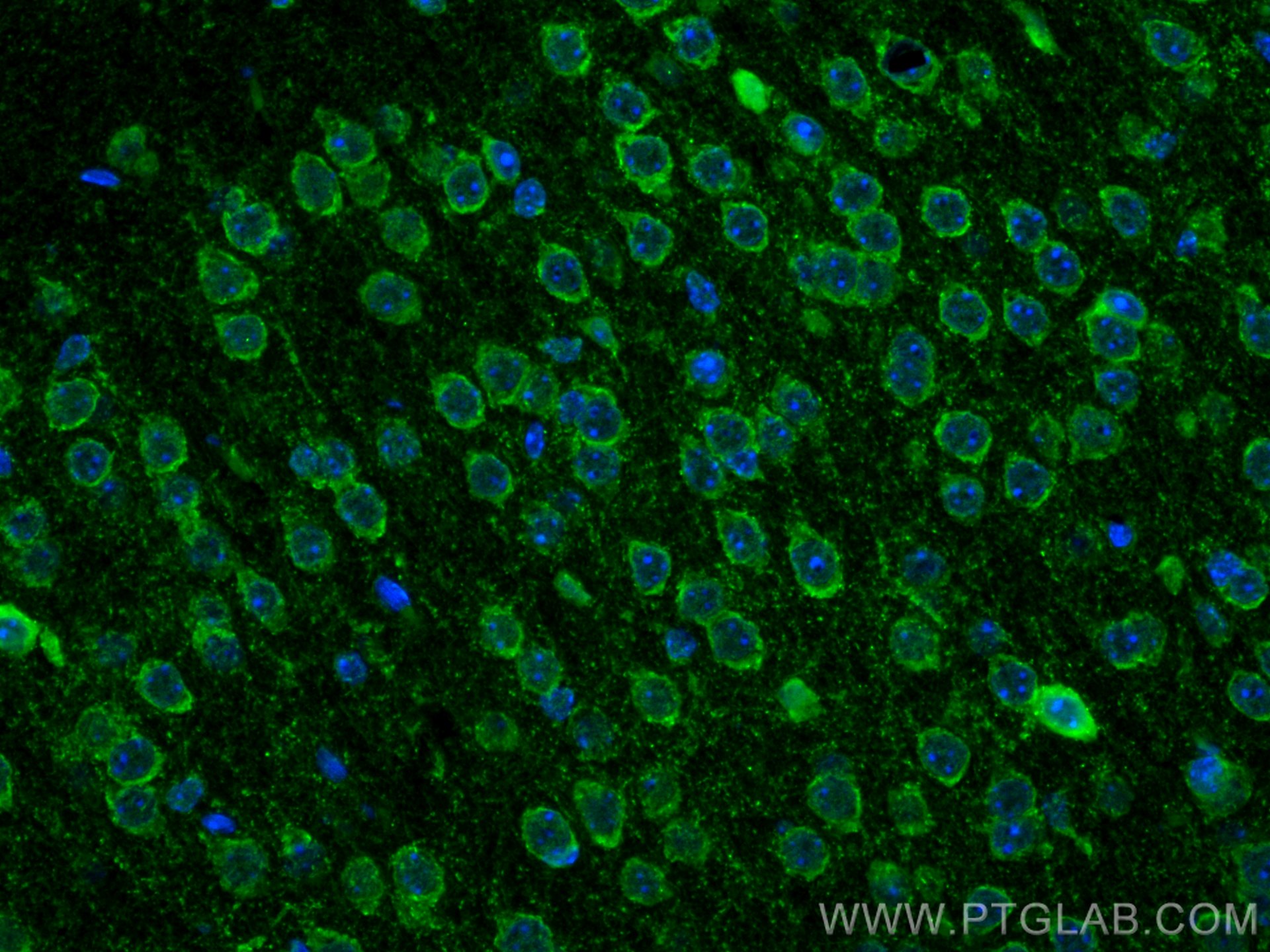CoraLite® Plus 488-conjugated GAD1 Monoclonal antibody
GAD1 Monoclonal Antibody for IF
Host / Isotype
Mouse / IgG2a
Reactivity
Human, mouse, rat, pig, rabbit
Applications
IF
Conjugate
CoraLite® Plus 488 Fluorescent Dye
CloneNo.
2D5B7
Cat no : CL488-67648
Synonyms
Validation Data Gallery
Tested Applications
| Positive IF detected in | mouse brain tissue |
Recommended dilution
| Application | Dilution |
|---|---|
| Immunofluorescence (IF) | IF : 1:50-1:500 |
| It is recommended that this reagent should be titrated in each testing system to obtain optimal results. | |
| Sample-dependent, Check data in validation data gallery. | |
Product Information
CL488-67648 targets GAD1 in IF applications and shows reactivity with Human, mouse, rat, pig, rabbit samples.
| Tested Reactivity | Human, mouse, rat, pig, rabbit |
| Host / Isotype | Mouse / IgG2a |
| Class | Monoclonal |
| Type | Antibody |
| Immunogen | GAD1 fusion protein Ag21336 |
| Full Name | glutamate decarboxylase 1 (brain, 67kDa) |
| Calculated Molecular Weight | 67 kDa |
| Observed Molecular Weight | 67 kDa |
| GenBank Accession Number | BC002815 |
| Gene Symbol | GAD1 |
| Gene ID (NCBI) | 2571 |
| Conjugate | CoraLite® Plus 488 Fluorescent Dye |
| Excitation/Emission Maxima Wavelengths | 493 nm / 522 nm |
| Form | Liquid |
| Purification Method | Protein A purification |
| Storage Buffer | PBS with 50% Glycerol, 0.05% Proclin300, 0.5% BSA, pH 7.3. |
| Storage Conditions | Store at -20°C. Avoid exposure to light. Stable for one year after shipment. Aliquoting is unnecessary for -20oC storage. 20ul sizes contain 0.1% BSA. |
Background Information
The GAD1(glutamate decarboxylase 1) gene encodes 67 kDa glutamic acid decarboxylase isoform (GAD67), the rate-limiting enzyme responsible for γ-aminobutyric acid (GABA) biosynthesis from glutamatic acid and the major GAD isoform in the human brain for early brain development(PMID:21302352). It is also potentially involved in variety of skin activities. It belongs to the group II decarboxylase family.
Protocols
| Product Specific Protocols | |
|---|---|
| IF protocol for CL Plus 488 GAD1 antibody CL488-67648 | Download protocol |
| Standard Protocols | |
|---|---|
| Click here to view our Standard Protocols |



